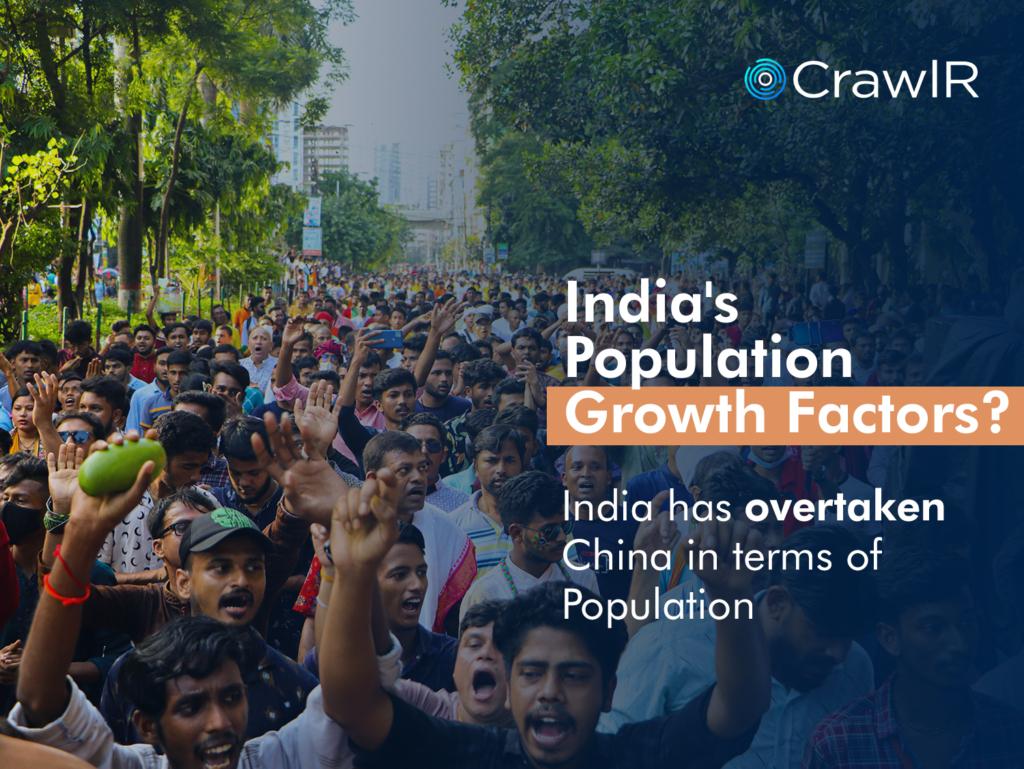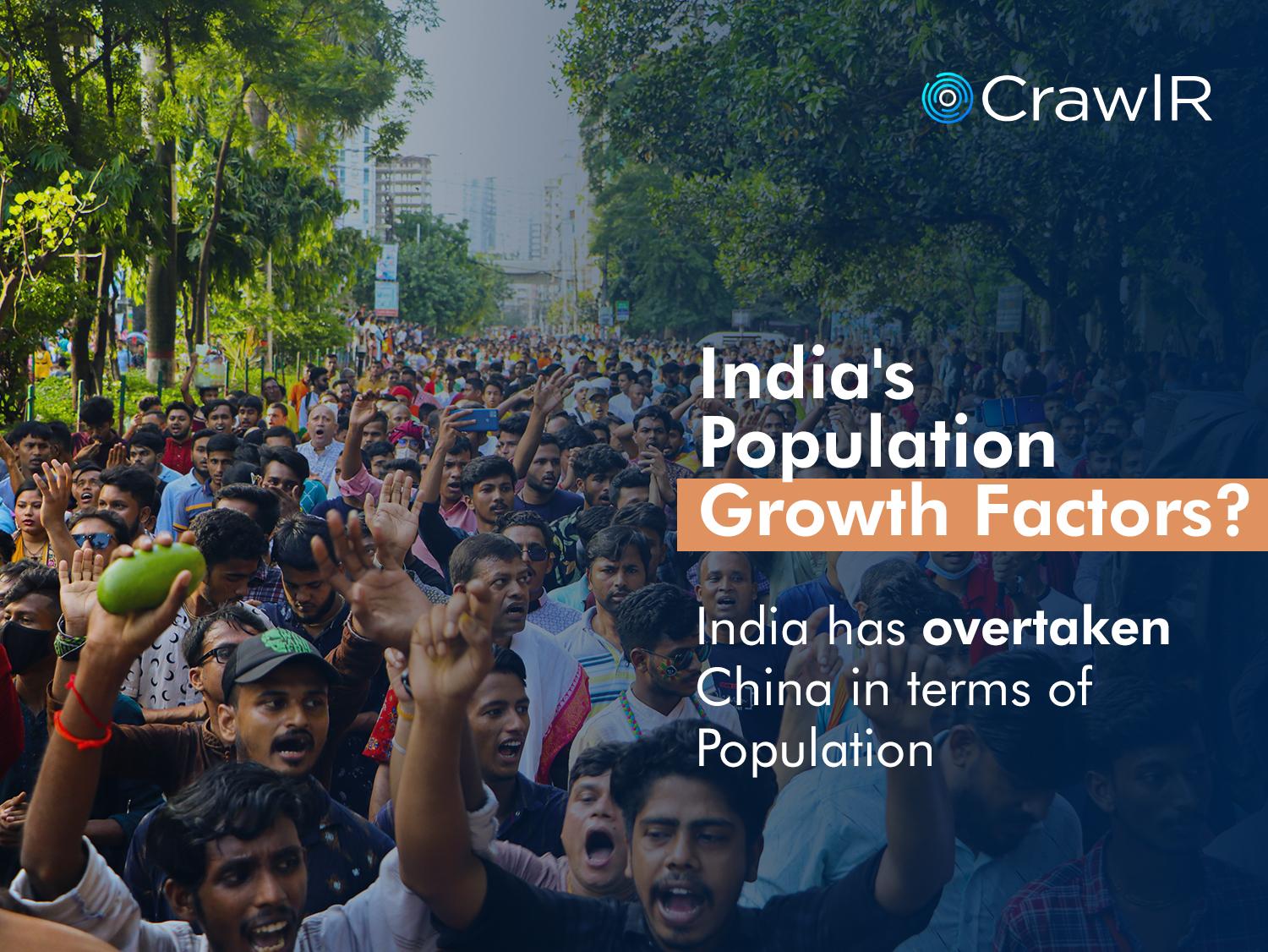India’s Population Growth Factors
India has overtaken China in terms of population. There are several factors that contribute to population growth in India. Some of the main factors include:
- High fertility rates: India has a relatively high fertility rate of 2.3 children per woman, which contributes to population growth.
- Lack of access to family planning and reproductive health services: Many people in India do not have access to effective birth control methods or information about family planning, which can lead to unintended pregnancies and population growth.
- Poverty and lack of education: People living in poverty and with low levels of education are more likely to have larger families, which contributes to population growth.
- Cultural and religious influences: Some cultural and religious beliefs in India, such as the importance of having many children, can contribute to population growth.
- Increase in life expectancy: As people are living longer, the population is growing.
- Migration: Migration from rural to urban areas has led to an increase in population in urban areas.
- Economic development and increase in standard of living: Economic development and increase in standard of living has led to a decline in mortality rate which leads to population growth.

India’s Population Diversity
India is known for its diversity in terms of language, religion, culture, and ethnicity. Some key points about India’s population diversity include:
- Language: India has more than 1,600 languages spoken across the country. The official language is Hindi, but English is also widely spoken and understood.
- Religion: India is a secular country with a diverse religious population. Hinduism is the dominant religion, followed by Islam, Christianity, Sikhism, Buddhism, and Jainism.
- Ethnicity: India has a diverse ethnic population, with many different tribes and communities. Some of the major ethnic groups include the Indo-Aryans, Dravidians, Austro-Asiatics, and Mongoloids.
- Caste system: India has a caste system, which is a traditional social hierarchy based on birth and occupation. The caste system is a source of much social and economic inequality in India.
- Regional diversity: India has a rich regional diversity, with different states having their own unique culture, language and customs.
- Urban-Rural Divide: The population of India is divided into urban and rural areas, with different cultures and ways of life.
The diversity of India’s population is also reflected in the country’s politics, where many different groups and interests compete for representation and influence.
State wise population India

India is the second most populous country in the world, with a population of over 1.4 billion people. The population is distributed unevenly across the country’s different states and territories. Some of the most populous states in India include:
- Uttar Pradesh: With a population of over 230 million, Uttar Pradesh is the most populous state in India. It is located in the northern part of the country and has the city of Lucknow as its capital.
- Maharashtra: Maharashtra is the second most populous state in India, with a population of over 130 million. It is located in the western part of the country and has Mumbai as its capital.
- Bihar: With a population of over 120 million, Bihar is the third most populous state in India. It is located in the eastern part of the country and has Patna as its capital.
- West Bengal: West Bengal is the fourth most populous state in India, with a population of over 90 million. It is located in the eastern part of the country and has Kolkata as its capital.
- Andhra Pradesh: Andhra Pradesh is the fifth most populous state in India, with a population of over 85 million. It is located in the southern part of the country and has Amaravati as its capital.
- Madhya Pradesh: With a population of over 75 million, Madhya Pradesh is the sixth most populous state in India. It is located in the central part of the country and has Bhopal as its capital.
- Tamil Nadu: Tamil Nadu is the seventh most populous state in India, with a population of over 72 million. It is located in the southern part of the country and has Chennai as its capital.
These are some of the most populous states, However, there are many more states with different population figures and characteristics.

Salient features of Indian population
India has a diverse and rapidly growing population that is characterized by several key features:
- Large population size: India is the second most populous country in the world, with a population of over 1.4 billion people.
- Young population: A large proportion of India’s population is under the age of 30, with nearly half of the population being below the age of 25.
- High fertility rate: India has a relatively high fertility rate of 2.3 children per woman, which contributes to population growth.
- High population density: India has a high population density, with many of its states and cities being densely populated.
- Gender imbalance: India has a significant gender imbalance, with a higher number of males than females.
- High rural population: A large proportion of India’s population lives in rural areas, where poverty and lack of access to education and healthcare are more prevalent.
- High level of diversity: India is a diverse country with different languages, religions, cultures, and ethnicities.
- Increasing urbanization: India is experiencing a rapid process of urbanization, with more and more people moving from rural to urban areas.
- Socioeconomic disparities: India has significant socioeconomic disparities, with a large proportion of its population living in poverty and facing a lack of access to basic services and opportunities.
- High population growth: India’s population is growing rapidly, and is projected to become the world’s most populous country in the near future.
These salient features of Indian population can lead to a number of challenges, such as overpopulation, strain on resources, and social and economic inequality.




